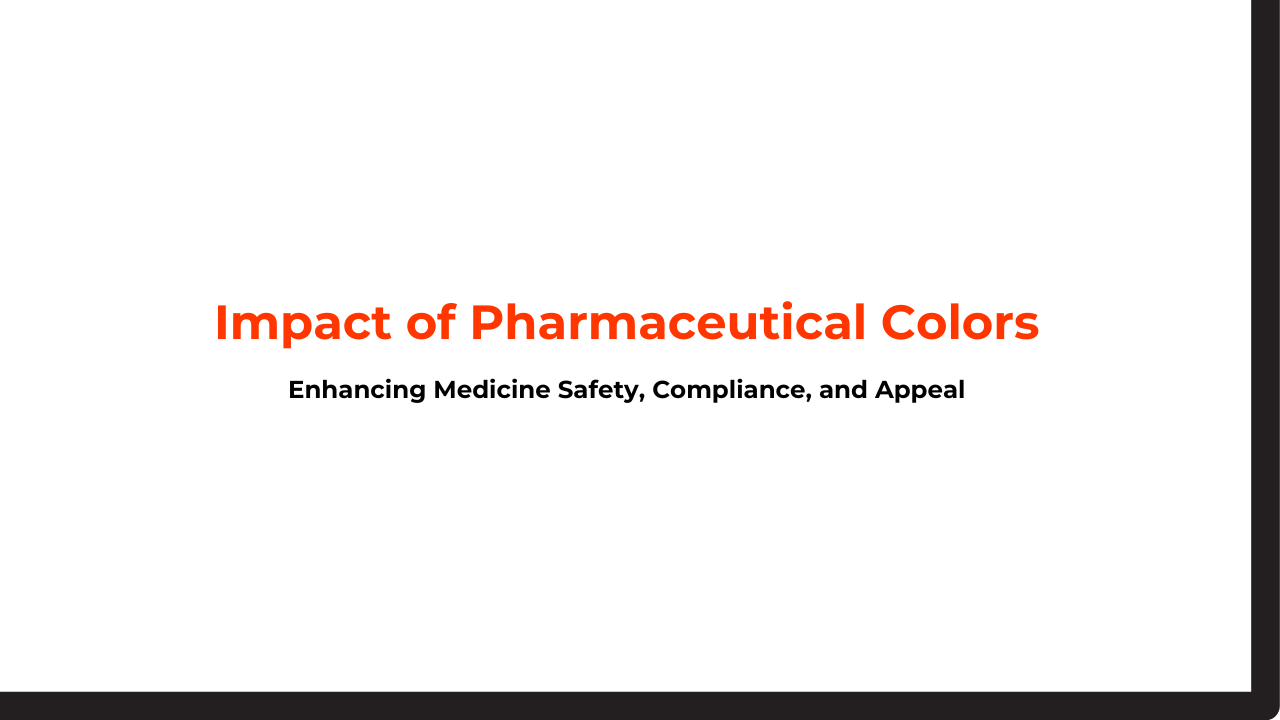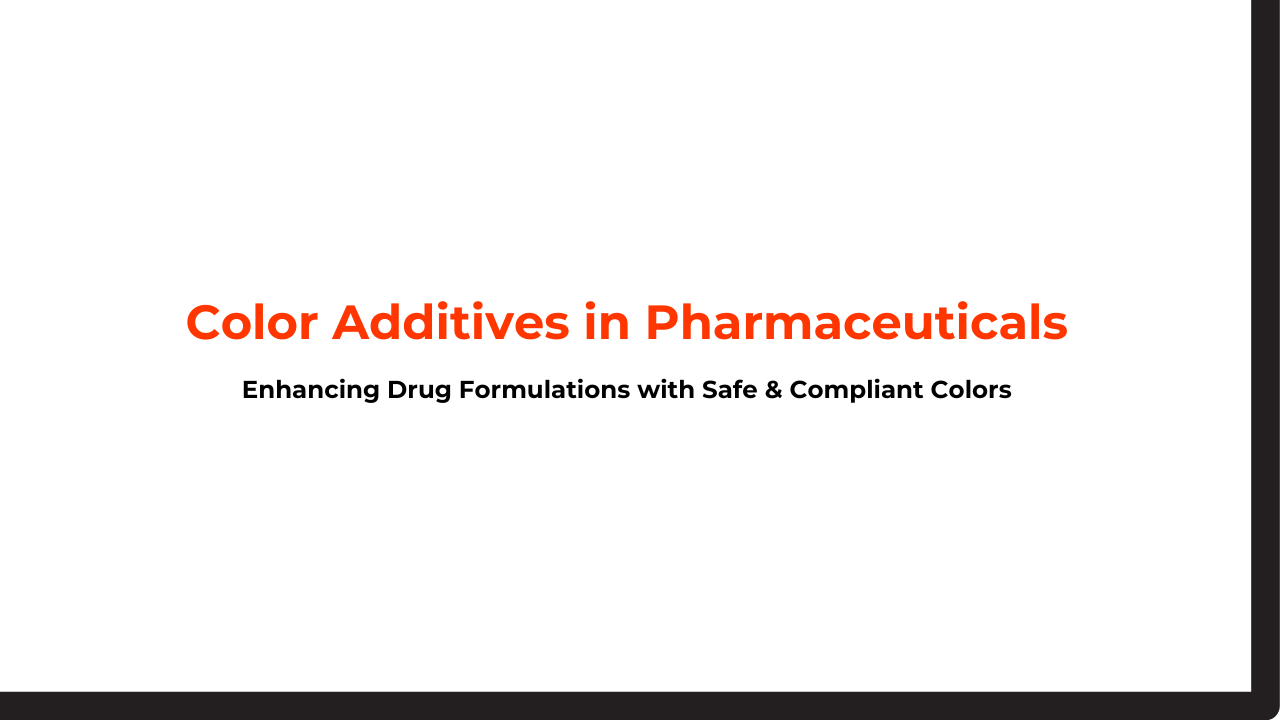Introduction
Pharmaceutical preparations must meet strict safety, efficacy, and patient usability standards. Color plays a critical yet often overlooked role among the many formulation elements.
Manufacturers use specific colors in pharmaceutical preparations for aesthetic, practical, psychological, and regulatory reasons. The right color helps patients identify their medications, encourages adherence, and supports brand recognition across global markets.
Why Colors Matter in Pharmaceuticals?
Color serves as more than a decorative feature in medications. It offers functional benefits that directly affect patient health outcomes. Here’s how colors in pharmaceutical preparations add value:
- Identification and distinction: Color enables easy distinction between drugs that may look similar in size or shape. It reduces the risk of medication errors in clinical and home settings.
- Improved Patient Compliance: Patients, especially children and older adults, respond better to appealing medications. Color makes tablets and syrups more acceptable and easier to remember.
- Psychological Influence: Colors can trigger specific psychological responses. For example, blue often conveys calmness, while red may indicate strength or alertness. These associations can influence how patients perceive the effectiveness of a medication.
Pharmaceutical companies build trust and enhance the treatment experience using carefully selected colors.
Read More: Impact of Pharmaceutical colors on medicine
Types of Colorants Used in Pharmaceuticals
Manufacturers select pharmaceutical colorants based on safety, stability, dissolving ability, and regulatory approval. These colorants fall into three categories: synthetic dyes, natural colorants, and lake pigments. Each type serves a specific purpose in different drug product formulations.
1. Synthetic Dyes
Pharmaceutical manufacturers widely use synthetic dyes because they offer intense coloration, chemical stability, and cost-effectiveness.
They dissolve well in water and provide consistent color across production batches. These dyes originate from petroleum-based sources and undergo strict cleansing to meet pharmaceutical-grade requirements.
Common examples include:
- FD&C Red No. 40 (Allura Red AC)
- FD&C Yellow No. 6 (Sunset Yellow FCF)
- FD&C Blue No. 1 (Brilliant Blue FCF)
Pharmaceutical manufacturers widely use synthetic dyes because they offer intense coloration, chemical stability, and cost-effectiveness. Despite their widespread use, some colorants face scrutiny over potential allergenic effects, particularly in sensitive individuals. Regulatory authorities like the FDA (U.S.) and EMA (EU) control their use, requiring clear labeling and safety evaluation.
2. Natural Colorants
Natural colorants offer a more consumer-friendly image, especially in clean-label and pediatric medications. These substances come from plant, mineral, or animal sources and often carry nutritional or protective compound properties.
Common natural colorants include:
- Curcumin (from turmeric – yellow)
- Beetroot extract (red to purple shades)
- Chlorophyll (from plants – green)
- Anthocyanins (from berries – blue, purple)
- Carmine (from cochineal insects – deep red)
Pharmaceutical companies use natural colors in oral suspensions, chewable tablets, and topical products.
However, their application may face limitations because of pH sensitivity, light degradation, or batch-to-batch variation.
Pharmaceutical manufacturers widely use synthetic dyes because they offer intense coloration, chemical stability, and cost-effectiveness.
3. Lake Pigments
Lake pigments are water-insoluble colorants created by reacting a dye (usually synthetic) with a metal salt like aluminum. This reaction forms a stable, inert pigment suitable for solid dosage forms.
Lake pigments don’t bleed or spread because they don’t dissolve in water. This makes them ideal for film coatings, tablets, and capsules.
Key advantages include:
- Uniform dispersion
- Long shelf life
- Stability under heat and light
Lake pigments give better color control than water-based dyes. They work well in layered tablets and complex medicines
Conclusion
Color plays a strategic and functional role in modern drug design. From aiding identification to enhancing compliance, using colors in pharmaceutical preparations supports safety and therapeutic success.
Manufacturers must choose their colorants carefully, balancing aesthetics with stability and regulatory compliance. As innovation continues, patients can expect more personalized and clearer medications in the future.




